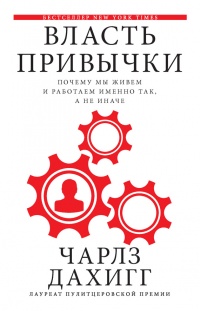Читать книгу "Секреты лаборатории питания. Наука похудения, мифы о силе воли и пользе диет - Трейси Манн"
Шрифт:
Интервал:
Закладка:
28. Вероятно, вы подумали об упомянутых в главе 2 экспериментах, в которых заключенные и добровольцы должны были на время потолстеть. Они не подходят для этого случая, поскольку в них не предусмотрено наличие контрольных групп. Sims, “Experimental Obesity, Dietary-Induced Thermogenesis, and Their Clinical Implications”.
29. Mann et al., “Medicare’s Search for Effective Obesity Treatments: Diets Are Not the Answer”.
30. Mann, Tomiyama, and Ahlstrom, “Long-Term Effects of Dieting”.
31. Look AHEAD Research Group, “Cardiovascular Effects of Intensive Lifestyle Intervention in Type 2 Diabetes”, New England Journal of Medicine 369, no. 2 (June 24,2013): 145-54, doi:10.1056/NEJMoal212914.
32. Определения появляются в работе: National Institute of Diabetes and Digestive and Kidney Diseases, “Data & Safety Monitoring Plans”, Research and Funding for Scientists, 2013, http://www.niddk.nih. gov/research-funding/process/human-subjects-research/data-safety-monitoring-plans/Pages/data-and-safety-monitoring-plans.aspx. Для ознакомления с исследованием, которое проводили ученые из Look AHEAD (см. предыдущее примечание) и которое было закрыто по причине «бесполезности», см.: Look AHEAD Protocol Review Committee, “Protocol: Action for Health in Diabetes: Look AHEAD Clinical Trial, 10th Revision”, 2012, https://www.lookaheadtrial.org/ public/LookAHEADProtocol.pdf, p. 38.
33. “Weight Loss Does Not Lower Heart Disease Risk from Type 2 Diabetes”, пресс-релиз, Национальные институты здравоохранения США, 2012, http://www.nih.gov/news/health/oct2012/ niddk-19.htm.
34. J. Bruce Redmon et al., “Effect of the Look AHEAD Study Intervention on Medication Use and Related Cost to Treat Cardiovascular Disease Risk Factors in Individuals with Type 2 Diabetes”, Diabetes Care 33, no. 6 (June 1, 2010): 1153-58, doi:10.2337/dc09-2090.
35. Сюда включены все исследования смертности, обобщенные Кэтрин Флегал.
36. Если вы в исследованиях используете метод случайной выборки, то вам не нужно волноваться о различиях между полными и стройными людьми, потому что благодаря случайной выборке состав группы оказывается однородным практически по всем аспектам. У участников обнаруживается сходство даже тех характеристик, о которых вы и не думали. И это принципиально важно. Как профессиональный ученый могу со всей убежденностью сказать, что в мире есть бесконечное множество нюансов, о которых я никогда не задумывалась.
37. J. J. Varo et al., “Distribution and Determinants of Sedentary Lifestyles in the European Union”, International Journal of Epidemiology 32, no. 1 (February 1, 2003): 138-46, doi:10.1093/ije/dygll6.
38. Там же.
39. Casazza et al., “Myths, Presumptions, and Facts about Obesity”.
40. Phillipa Caudwell et al., “Exercise Alone Is Not Enough: Weight Loss Also Needs a Healthy (Mediterranean) Diet?”, Public Health Nutrition 12, no. 9A (September 1, 2009): 1663-66, doi: 10.1017/ S1368980009990528.
41. Scott M. Grundy et al., “Clinical Management of Metabolic Syndrome: Report of the American Heart Association/National Heart, Lung, and Blood Institute / American Diabetes Association Conference on Scientific Issues Related to Management”, Circulation 109, no. 4 (February 3, 2004): 551-56, doi:10.1161/01.CIR.0000112379.88385.67.
42. D. E. Thomas, E. J. Elliott, and G. A. Naughton, “Exercise for Type 2 Diabetes Mellitus”, Evidence-Based Nursing 10, no. 1 (2007): 11.
43. Balraj S. Heran et al., “Exercise-Based Cardiac Rehabilitation for Coronary Heart Disease”, Cochrane Database of Systematic Reviews no. 7 (January 2011): CD001800, doi:10.1002/14651858.CD001800.pub2.
44. Paul D. Thompson et al., “Exercise and Physical Activity in the Prevention and Treatment of Atherosclerotic Cardiovascular Disease: A Statement from the Council on Clinical Cardiology (Subcommittee on Exercise, Rehabilitation, and Prevention) and the Council on Nutrition, Physical Activity, and Metabolism (Subcommittee on Physical Activity)”, Circulation 107, no. 24 (June 24, 2003): 3109-16, doi:10.1161/01. CIR.0000075572.40158.77.
45. Sean Carroll and Mike Dudfield, “What Is the Relationship between Exercise and Metabolic Abnormalities?”, Sports Medicine 34, no. 6 (2004): 371-418, doi: 10.2165/00007256-200434060-00004.
46. Martha L. Slattery and John D. Potter, “Physical Activity and Colon Cancer: Confounding or Interaction?”, Medicine and Science in Sports and Exercise 34, no. 6 (June 2002): 913-19.
47. Rosalind A. Breslow et al., “Long-Term Recreational Physical Activity and Breast Cancer in the National Health and Nutrition Examination Survey I Epidemiologic Follow-up Study”, Cancer Epidemiology, Biomarkers & Prevention 10, no. 7 (July 1, 2001): 805-8.
48. Casazza et al., “Myths, Presumptions, and Facts about Obesity”; Breslow et al., “Long-Term Recreational Physical Activity and Breast Cancer in the National Health and Nutrition Examination Survey I
Epidemiologic Follow-up Study”; Grundy et al., “Clinical Management of Metabolic Syndrome”; Thomas, Elliott, and Naughton, “Exercise for Type 2 Diabetes Mellitus”; Caudwell et al., “Exercise Alone Is Not Enough”.
49. S. N. Blair and T. S. Church, “The Fitness, Obesity, and Health Equation: Is Physical Activity the Common Denominator?”, JAMA 292, no. 10 (2004): 1232-34, doi:10.1001/jama.292.10.1232; S. N. Blair and S. Brodney, “Effects of Physical Inactivity and Obesity on Morbidity and Mortality: Current Evidence and Research Issues”, Medicine & Science in Sports & Exercise 31, no. 11 Suppl. (1999): S646-62; M. Fogelholm, “Physical Activity, Fitness and Fatness: Relations to Mortality, Morbidity and Disease Risk Factors: A Systematic Review”, Obesity Reviews 11, no. 3 (2010): 202-21, doi:10.1111/j.l467-789X.2009.00653.x; M. Wei et al., “Relationship between Low Cardiorespiratory Fitness and Mortality in Normal-Weight, Overweight, and Obese Men”, JAMA 282, no. 16 (1999): 1547-53.
50. Paul McAuley et al., “Fitness and Fatness as Mortality Predictors in Healthy Older Men: The Veterans Exercise Testing Study”, Journals of Gerontology: Series A, Biological Sciences and Medical Sciences 64, no. 6 (June 1, 2009): 695-99, doi:10.1093/gerona/gln039.
51. Caitlin Mason et al., “History of Weight Cycling Does Not Impede Future Weight Loss or Metabolic Improvements in Postmenopausal Women”, Metabolism: Clinical and Experimental 62, no. 1 (January 1, 2013): 127-36, doi: 10.1016/j.metabol.2012.06.012.
52. Nancy E. Adler and Joan M. Ostrove, “Socioeconomic Status and Health: What We Know and What We Don’t”, Annals of the New York Academy of Sciences 896, no. 1 (December 6, 1999): 3-15, doi: 10.1111/j.1749-6632.1999.tb08101.x.
53. M. G. Marmot, M. J. Shipley, and G. Rose, “Inequalities in Death — Specific Explanations of a General Pattern?”, Lancet 1, no. 8384 (May 5, 1984): 1003-1006.
Внимание!
Сайт сохраняет куки вашего браузера. Вы сможете в любой момент сделать закладку и продолжить прочтение книги «Секреты лаборатории питания. Наука похудения, мифы о силе воли и пользе диет - Трейси Манн», после закрытия браузера.




